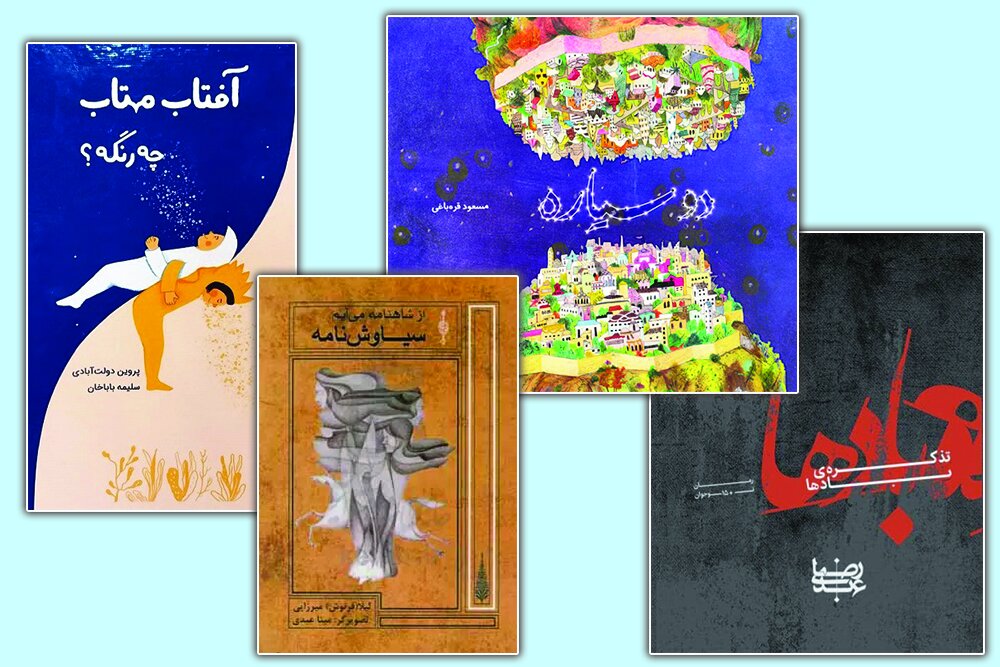Four books from Iran introduced in White Ravens catalogue 2023

TEHRAN-The International Youth Library in Munich has selected four books from Iran for this year’s edition of the White Ravens catalogue.
The Iranian books introduced in the catalogue include “The Tale of the Winds” written by Reza Abdi, “What Color is the Moonlight? What Color is the Sunlight?” written by Parvin Dowlatabadi and illustrated by Salimeh Babakhan, “Two Planets” written and illustrated by Masoud Gharahbaghi, and “I Come from Shahnameh: Siyavash” written by Leila Mirzaie and illustrated by Mina Abdi, IRNA reported.
Each year the International Youth Library based in Munich, Germany, publishes a catalogue called The White Ravens with a selection of notable books from around the world. A group of children’s literature experts makes the selection from the thousands of children’s books that are sent to the library annually, and narrows them down to a list of 200 books.
This year, the International Youth Library's editors have selected 200 titles for the White Ravens catalogue from over 10,000 book donations. In this year's edition, 39 languages and 57 countries are represented.
In “The Tale of the Winds,” which is set on an island, the main character, Hormoz, is believed to have the special gift of being able to foresee events and reveal secrets. This time, however, Hormoz is faced with a problematic secret: why their teacher committed suicide. During the narration of what happened to the teacher, Hormoz deals with many issues: love, death, violence, betrayal, maturity, superstition, etc.
The story’s complex, nested plot, the idiosyncratic layout, and the use of Iranian calligraphic art motifs all help make the book a unique and outstanding work.
The poem “What Color is the Moonlight? What Color is the Sunlight?” is based on an old Iranian singsong game played by children and is now published with new illustrations. The verses describe how things alternate, such as day and night, the moon and the sun, sleep and wakefulness, or the colors of the earth and the sky. The mood of the sky at night and the sounds of the morning have been turned into a melodious and imaginative form for children.
By depicting day and night or sun and moon as child characters, illustrator Babakhan has given the poem a modern twist in which the children are not on the periphery but in the center of the book. The pictures were included in the shortlist of the Asian Festival of Children’s Content 2023.
Mirzaie’s “I Come from Shahnameh: Siyavash” is about the prince Siyavash, the legendary character of the famous Shahnameh epic by Persian poet Ferdowsi. He is a symbol of purity, of being oppressed, and, also of a praiseworthy life. After being slandered by his stepmother, he goes through fire to prove his innocence, but dies, at the end, through the malice of those around him.
In this adaptation, written in elegant prose and at the same time simple enough for teenagers, Siyavash’s story is told by the women of his life: his mother, his stepmother, and his first and second wives. Taking this innovative perspective, the book shows how, behind the scenes in a men’s world, women play a key role and determine the fate of the heroes. The author, Mirzaei, who studied Persian literature, has done specific research on the topic of women’s voices in the Shahnameh.
This story is a good example of intertextuality and proves that myths, legends, and religious texts from different cultures have always interacted with each other.
With “Two Planets,” the highly talented author and illustrator Gharahbaghi gives another example of his excellent and creative work.
His story takes place somewhere in the universe, where there are two planets called Corto and Shonto, both of which revolve around the same sun. They are connected to each other by a huge and ancient bridge. The people of these planets lived together in peace until, one day, a scientist from Shonto invents a device with which outer space can be seen more clearly. The scholar enthusiastically draws a map of the sky and the stars. But this map leads to conflicts among the people of the two planets because the sky of Corto does not look the same as the sky of Shonto. What is wrong?
The answer to this question is exactly the point that the book tries to raise with the reader: what impact do our respective attitudes and perspectives have on what we see? And wouldn’t it be wise and sometimes necessary to look at the world through the eyes of others in order to understand that others can be just as right as we are?
The White Ravens catalogue – a treasure trove for literary discoveries – serves as a compass through the vast children's book market for publishers, libraries, literary festivals, international bookstores and agencies, as well as anyone interested in international children's books.
SS/SAB
Leave a Comment